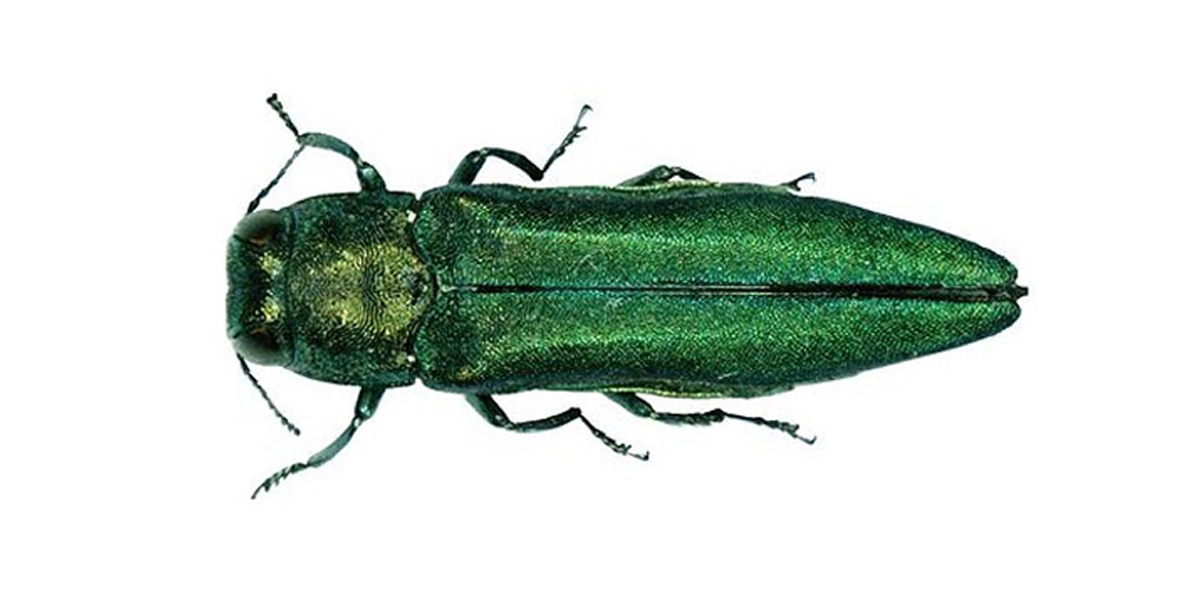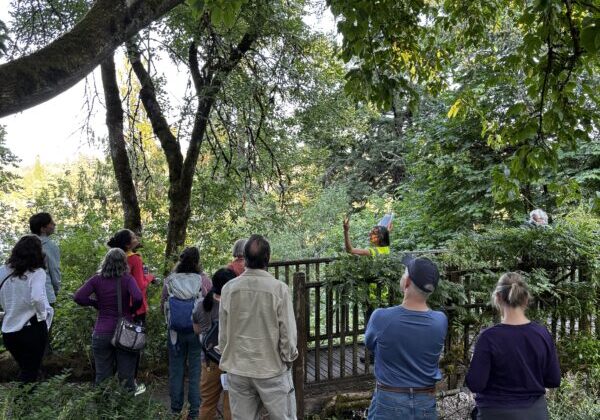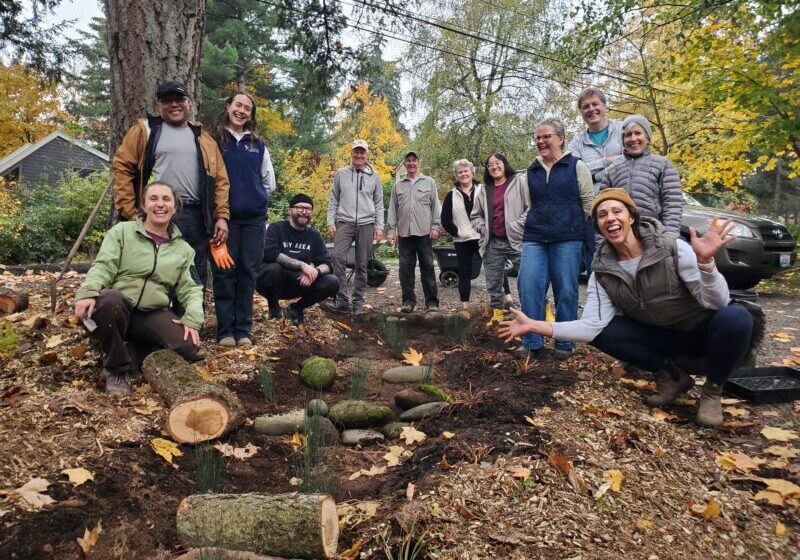The emerald ash borer was found in Forest Grove (Washington County, Oregon) and state officials are asking the public to learn what it looks like and to report any sightings online at the Oregon Invasive Species Council hotline. This insect is now considered the most destructive forest pest in North America and will decimate native ash stands. If you have unhealthy looking ash trees, look for D-shaped bore holes. The Oregon Department of Agriculture states that the infested ash trees in Forest Grove were cut down and chipped within 48 hours of discovery to prevent further spread.
Emerald ash borer (Agrilus planipennis) (EAB) is a small, brilliant metallic green beetle about half an inch long and native to north-east Asia that was unintentionally introduced to the U.S. around 2002, likely in ash wood used in cargo shipping. The insect has since had a devastating effect on all species of ash trees in North America, in both natural woodlands and cities. It is currently detected in 35 other states, mainly in the Midwest and northeast, and 5 Canadian provinces. EAB has spread from people moving firewood, logs, or ash trees from nurseries, as well as by the natural movement of the insect. Prior to being discovered in Oregon, there was great concern that this damaging insect could jump all the way from Colorado to Oregon via firewood, which possibly could have happened. This is why firewood should only be purchased locally. EAB could cause immense harm to our forested wetlands since Oregon ash (Fraxinus latifolia) is the primary tree species that occupies such habitats and it is highly vulnerable to attack by Emerald ash borer.
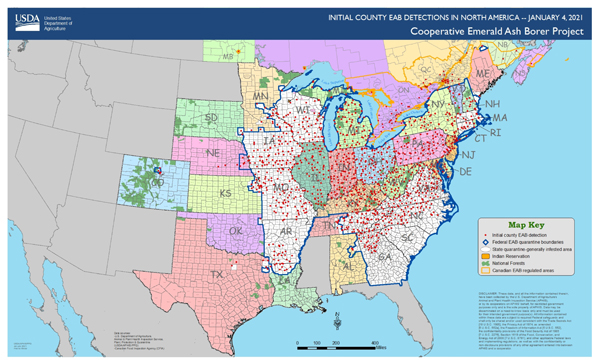
Due to the level of concern, a local partnership effort – initially coordinated by Oregon Department of Agriculture, and now by the Portland office of the U.S. Department of Agriculture (USDA), Animal and Plant Health Inspection Service (APHIS) – is in place to respond to the insect in our region. Because of our familiarity with the local landscape and connections to local landowners, WMSWCD was asked to get involved in the partnership. WMSWCD is contributing to the effort by deploying and checking traps in our district and then identifying collected insect samples, following established guidelines. These guidelines inform where traps should be set and how and when to check them.
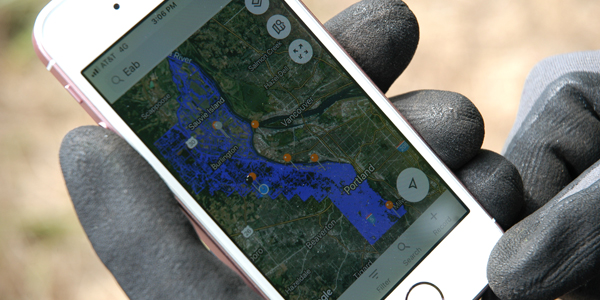
WMSWCD technical staff has set traps in Oregon ash trees in 6 varied and dispersed locations that could be potential pathways of transmission to new sites. Trap locations include a rural pastureland that might catch insects coming from the east side of the Tualatin Mountains; a forested spot on the east side of Tryon Creek State Natural Area; two in the Northwest Industrial area of Portland, to capture insects that might be traveling in wood shipping pallets on trucks; one on Sauvie Island; and one near the Smith & Bybee wetlands.
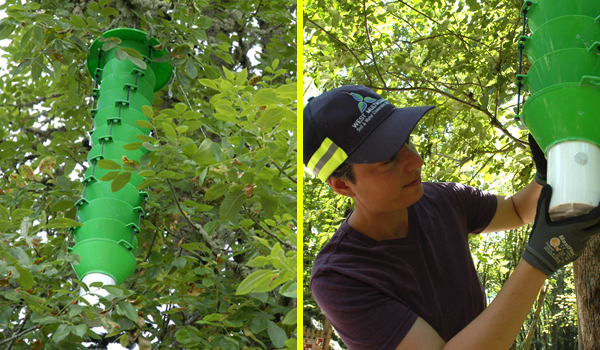
We put traps out during the time of year that adult EABs would be actively flying around – between June and late September. Our team checks the traps every 3 weeks and sends data to APHIS, including information on where the traps were placed, when they were checked, and if any target insects were found. The traps tend to collect a small number of other flying insects, but so far in these locations we have, thankfully, not found any EAB.
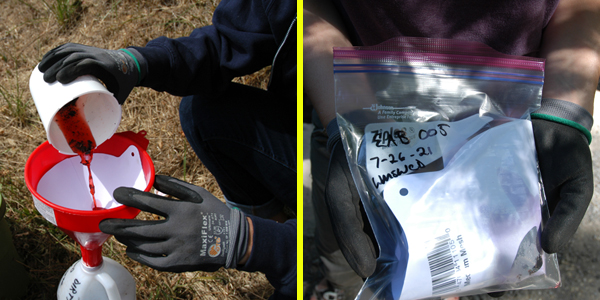
What happens if we find emerald ash borer in our district?
Oregon Department of Forestry (ODF), in coordination with Oregon Department of Agriculture, City of Portland Parks & Recreation, City of Corvallis Parks & Recreation, OSU Extension, and USDA APHIS, and the U.S. Forest Service, has a robust response plan that they will follow now that EAB is in Oregon.
Researchers in Michigan have explored the effectiveness of injecting some ash trees with a prophylactic insecticide to make individual trees resistant to an EAB infestation. This is most realistic as a management strategy in the landscape context. Other ways to mitigate the effects of EAB in the future may include potential biocontrols and selective tree removal, or collecting and preserving seeds of ash trees now to save for re-introduction later.
Conservationists in our area are raising an important question: Should we still be planting Oregon ash on restoration sites if the trees will likely be killed by EAB when it arrives in Oregon? Many believe arrival of EAB is an unavoidable outcome. In some locations, especially poorly drained bottomland areas, including forested wetlands and along some streams, there isn’t a great substitute for our native ash, however. Native alder and black cottonwood are also found in riparian areasRiparian areas The land alongside a stream, creek, river, or floodplain, but these trees are not as common in our poorly drained wetlands. One option is to continue planting ash trees along with as many other adapted native woody plant species as we can in wetland restoration projects. Among these planted ash trees may be some individual trees that survive an EAB infestation, and those trees could prove vital to restoring the species in the future. There is not much to replace the pure ash stands that grow in certain wetlands of the Willamette Valley and their disappearance would be a huge ecological loss.
And while it is good to be prepared for the worst, we recognize that there are many unknowns when it comes to a new species being introduced to a new location. By preventing the establishment of EAB in Oregon for as long as possible, we give researchers more time to develop mitigation strategies.
What can you do to help this effort?
- Become a pest detector! Oregon State University Extension offers the Oregon Forest Pest Detector Program with online trainings about pest insects. Find more information about the program and the pest detector course
- If you see an insect that you think could be Emerald Ash Borer, report it immediately to the Oregon Invasive Species online hotline or call 1-866-INVADER
- You can also call the USDA Emerald Ash Borer Hotline at 1-866-322-4512
Learn more about the Emerald ash borer:
- OSU Extension Service, Oregon Forest Pest Detector Pest Watch – Emerald ash borer (EAB) Info sheet
- Michigan State University Extension – Signs and symptoms of the emerald ash borer – Info sheet
(Photo at top: Emerald ash borer, Agrilus planipennis Fairmaire. Photograph by Pennsylvania Department of Conservation and Natural Resources – Forestry, Bugwood.org; Image link)
